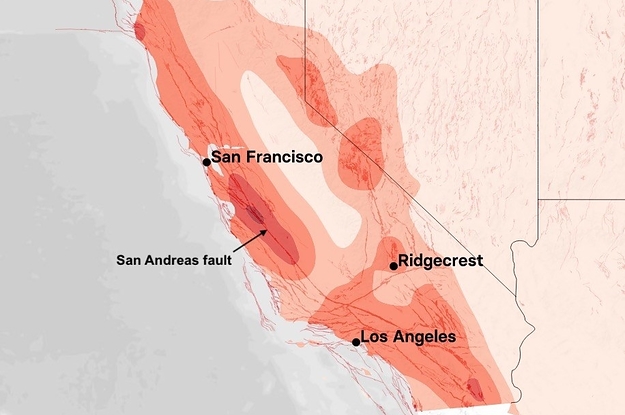https://www.sciencealert.com/epic-videos-show-the-july-4-earthquake-rippling-across-north-america
Videos Show The July 4 Earthquake Rippling Across North America
Before fireworks streaked across the skies of southern California on July 4, nature unleashed its own thunderous blast of energy: an earthquake.
The magnitude 6.4 temblor struck near Ridgecrest around 10:34 a.m. PT, cracking roads, bursting water mains, and toppling electrical power lines with its might.
A larger, 7.1 magnitude has since struck Southern California. Before that, the 6.4 quake was the most powerful to rattle the state in 20 years, and its shaking ended a five-year "drought" of earthquakes for California. Luckily, no deaths or major injuries have yet been reported.
As with all earthquakes, the Ridgecrest event was felt far beyond the borders of California – though not by people. Rather, incredibly sensitive devices called seismometers picked up the quake's rumbles from thousands of miles away.
Seismometers record the various ground motions of earthquakes, and a single station's data isn't all that interesting. Yet when many of the devices are sprinkled across a continent, they can be used to reconstruct a seismological event as it spreads, dissipates, and even bounces off underground structures.
As shown by a network of hundreds of seismometers called USArray, which is funded by the National Science Foundation, that seismic-wave data can look incredible.
"The ground motions can be captured and displayed as a movie, providing a visual demonstration of these often indiscernible movements," IRIS, a research group that studies seismological events and logs USArray data, says on its website. "The visualisations illustrate how seismic waves travel away from an earthquake."
more at link........
https://twitter.com/i/status/1146950304262475776
Videos Show The July 4 Earthquake Rippling Across North America
Before fireworks streaked across the skies of southern California on July 4, nature unleashed its own thunderous blast of energy: an earthquake.
The magnitude 6.4 temblor struck near Ridgecrest around 10:34 a.m. PT, cracking roads, bursting water mains, and toppling electrical power lines with its might.
A larger, 7.1 magnitude has since struck Southern California. Before that, the 6.4 quake was the most powerful to rattle the state in 20 years, and its shaking ended a five-year "drought" of earthquakes for California. Luckily, no deaths or major injuries have yet been reported.
As with all earthquakes, the Ridgecrest event was felt far beyond the borders of California – though not by people. Rather, incredibly sensitive devices called seismometers picked up the quake's rumbles from thousands of miles away.
Seismometers record the various ground motions of earthquakes, and a single station's data isn't all that interesting. Yet when many of the devices are sprinkled across a continent, they can be used to reconstruct a seismological event as it spreads, dissipates, and even bounces off underground structures.
As shown by a network of hundreds of seismometers called USArray, which is funded by the National Science Foundation, that seismic-wave data can look incredible.
"The ground motions can be captured and displayed as a movie, providing a visual demonstration of these often indiscernible movements," IRIS, a research group that studies seismological events and logs USArray data, says on its website. "The visualisations illustrate how seismic waves travel away from an earthquake."
more at link........
https://twitter.com/i/status/1146950304262475776

